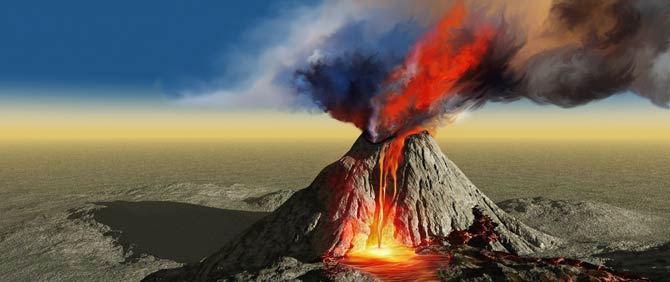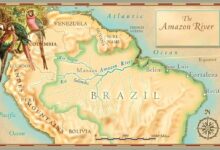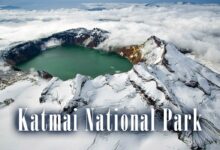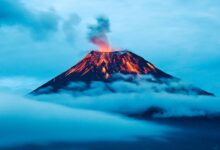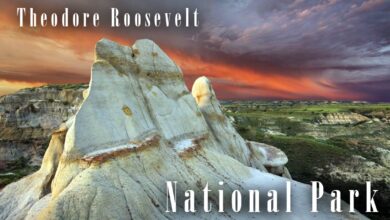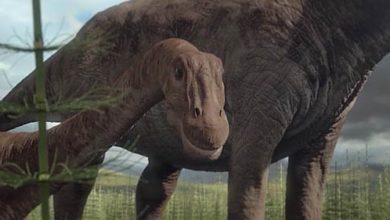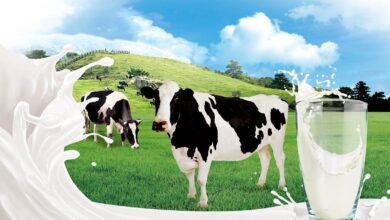Toba – the volcano that almost wiped out humanity
The picturesque surroundings of Lake Toba in Sumatra are considered to be one of the most attractive tourist destinations in the world. Visitors to this site rarely realize that the lake’s waters fill a huge caldera left over from eruption thousands of years ago.
The supervolcano, named after the lake that fills its crater, erupted four times during the Quaternary period, the last time being 75,000 years ago. It was also the strongest known explosion of it. Its effects had a global scope – they influenced the climate and living organisms all over the planet. In addition, the eruption nearly led to the complete annihilation of mankind.
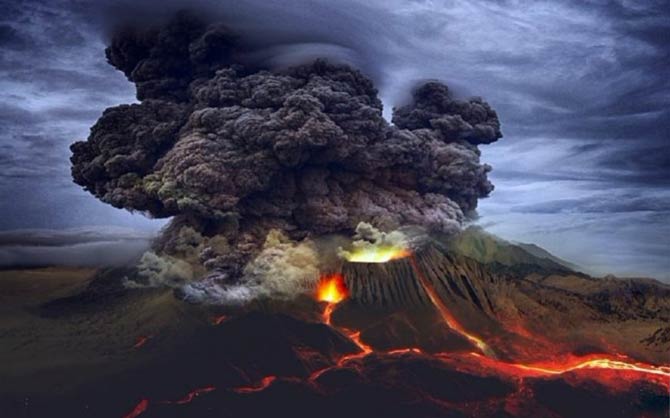
What are supervolcanoes?
A supervolcano is a type of volcano whose magma chamber lies very deep under the earth’s surface and has a volume of up to several thousand cubic kilometers. After such a powerful explosion, a flat crater with a diameter of up to several dozen kilometers is formed. The amount of ash that enters the atmosphere exceeds 1000 km3. The presence of supervolcanoes can be recognized by the phenomena occurring on the surface – the heat of the magma chamber causes hydrothermal phenomena, e.g. geysers.
A supervolcano eruption differs significantly from an ordinary volcano, primarily because of the much larger amount of volcanic material. Such a strong explosion causes enormous damage within a radius of hundreds of kilometers, while large amounts of ash released into the atmosphere change the climate of the entire planet. The sulfur oxides present in the ash cause acid rain, which is toxic to organisms. Such strong explosions are rare – not more often every 50-100 thousand years; so far, traces of dozens of such events have been discovered.
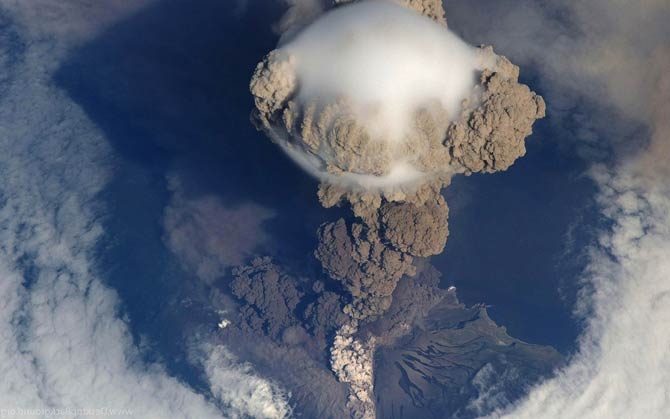
What happened thousands of years ago?
75,000 years ago (the time of the eruption is given with an accuracy of about 600 years), the island today known as Sumatra experienced the largest volcanic eruption in the Quaternary – it is also one of the most powerful volcanic eruptions ever studied. It is difficult to estimate the amount of material that was ejected into the air, but based on sediment and rock examination, it is estimated that 2,000 – 3,000 km3 of magma in the form of lava, rock and ash entered the atmosphere.
All this material probably weighed 7,000 billion tons! Recent surveys of the bottom of the South China Sea suggest, however, that this amount should be considered minimal or even significantly underestimated…
The most serious effect was the fact that there was at least 800 km3 of ash in the atmosphere. While floating in the air, it fell to the ground at distances of up to thousands of kilometers. Entire Southeast Asia was covered with a layer of up to 15 cm (6 in) of ash. It can be predicted that a tsunami wave arose then, which destroyed the shores of the surrounding lands. Besides, fine ash fractions became centers of condensation, forming clouds from which acid rain fell. They also made less solar radiation reach the Earth’s surface.
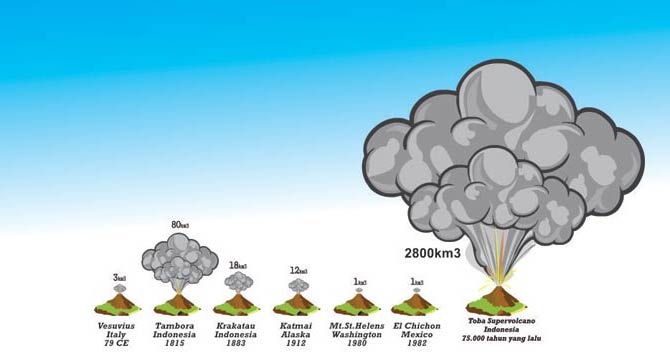
Effects of the eruption of the Toba volcano
Geologists say that the release of such an amount of ash into the atmosphere led to a global cooling of the climate, the so-called “Volcanic winter” – the average temperature could drop by as much as 5 °C in (9 °F) just 3 years. Research on rocks and ice cores in Greenland has shown that, in fact, just after the eruption, there was a cooling that lasted for decades (some estimates say even 1000 years).
Of course, this had a significant impact on living organisms – many species died out at that time or their numbers dropped significantly. Plant growth has declined worldwide, causing many animals to starve to death. Many of them suffocated – volcanic ash was inhaled by them, and in the lungs, under the influence of moisture, it hardens, blocking airways and hindering gas exchange. Herbivores could also die from internal hemorrhages caused by eating sharp particles of volcanic ash.
Destruction of vegetation limited transpiration, which was related to a decrease in the humidity in the atmosphere. This triggered a prolonged drought that was particularly severe in the rainforest and monsoon regions. Because of this, deserts may have formed, and the existing ones increased the range.
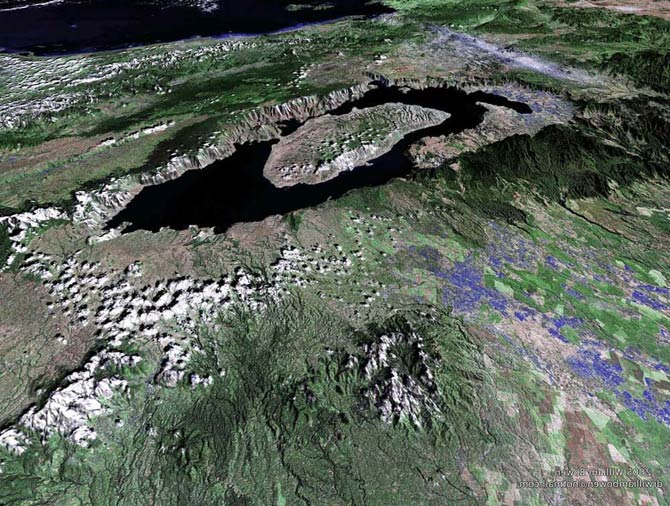
Toba and the “bottleneck”
Human genetic studies have shown that over 70,000 years ago, our evolution experienced a “bottleneck” effect – a significant reduction in the genetic diversity of a species. The population of the world declined sharply during this time. Before the eruption, there were probably at least 26,000 representatives of Homo sapiens around the world. After the Toba eruption, their number dropped to just 3,000 individuals, among which there may have been about 1,000 fertile couples. Evidence today shows that we do indeed all come from a small population of several thousand.
The human bottleneck effect coincides with the estimated date of the eruption of the Toba volcano. Scientists are sure that the eruption has led to a global ecological disaster. This must have resulted in the destruction of potential human food sources – both available plants and animals were reduced. That is why so few members of the Homo sapiens species survived the disaster period. It is believed that African populations managed to survive, where climate change was relatively the least severe and had the least impact on the vegetation and the animal world.
Not only man has become a victim of Toba. A similar bottleneck effect has also been found in other animal species, including the common chimpanzee and the orangutan. Also other mammals, including cheetah and tiger, 75,000 years ago, they went through a period of great extinction in which only a small number of them survived.
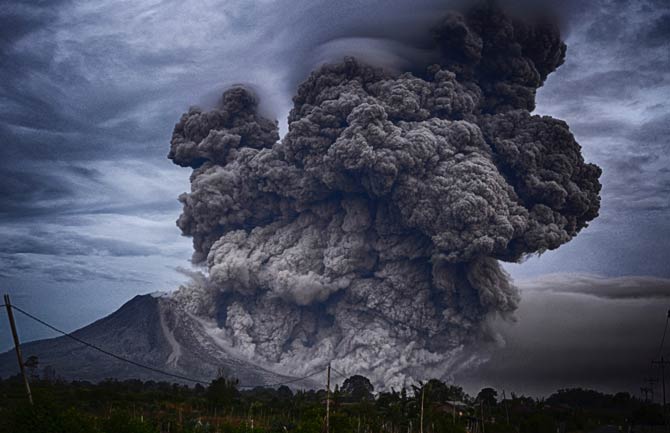
Were we indeed in danger of extinction?
Of course, like many theories about prehistory, this one is also questioned. For example, some scholars believe that human populations around the world have not suffered any damage, as evidenced by tools found in certain locations both before and after the eruption.
However, the survival of a community does not necessarily mean that it has not suffered any losses. On the contrary, it is highly probable that the super-eruption led to the death of many people, and the finds only show that some of them managed to survive and adapt to the new conditions that prevailed at that time.
The fact of adaptation gave man a huge advantage over other hominids, including the Neanderthal – the last competitor of the genus Homo. Thanks to this, Homo sapiens could relatively quickly spread around the world – it had better strategies to guarantee survival and win the competition for dominance on land.

Toba volcano today
Today, the inside of the Toba crater fills the lake. It has the shape of an elongated ring, with the Samosir Island in its center. It is inhabited by the Batak people, who form several related tribes that practiced cannibalism until 1905. The tribe, engaged in agriculture, builds characteristic houses with gabled roofs. The Bataks are unfortunately a dying out community, so they are an object of great interest to scholars.
Lake Toba and its surroundings are also being studied by geologists. They try to find out as much detail as possible about the supervolcano’s eruption and its effects on life on Earth. In addition, the Toba caldera is monitored, as it is a seismically active area. For example, there are periods of mass death of fish in the lake due to the release of sulfur compounds into the water.
Volcanic eruptions prove that man is often completely helpless in the face of nature. The famous eruptions of Vesuvius, Tambora (Tomboro) or Krakatoa (Krakatau) not only affected their immediate surroundings – they also caused changes all over the planet. It is hard to believe that their effects pale in comparison to the effects of a supervolcano eruption.
How humans would cope with such an event today is a matter of conjecture, but the world as we know it would certainly change dramatically.
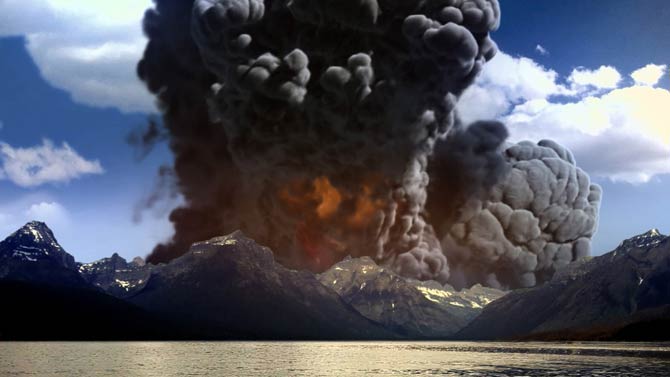
Toba eruption in numbers
- Date of eruption: 75,000 years ago ±900 years.
- Amount of rock material: 2,800 km3 (other estimates: 2,500 km³ – 3,200 km³)
- Ash: 800 km³
- Magma amount: 7 × 1,015 kg
- The eruption caused a brief, dramatic cooling or volcanic winter, which caused the global average surface temperature of the Earth to drop by 3–5 °C (5.4–9.0 °F)
- The maximum global cooling of the air temperature of approximately 15 °C (27 °F) occurred three years after the eruption
- The eruption of the Toba volcano was linked to a genetic bottleneck in human evolution some 70,000 years ago, which may have been due to the severe reduction in the size of the entire human population as a result of the impact of the eruption on the global climate on Earth.
- Between 50,000 and 100,000 years ago, the human population plummeted to 3,000-10,000 on the planet. As a result, genetic differences between people have decreased significantly.
- Some evidence also points to genetic bottlenecks in animals in the post-Toba period (chimpanzees, gorillas, orangutans, macaques, tigers, cheetahs).
- After the eruption of the Toba volcano, great human migrations took place. The main migration from Africa took place 60,000-70,000 years ago.

Toba volcano – interesting facts
- The Toby eruption was 40 times stronger than the eruption of the Tambora volcano – the most powerful eruption of historical times, which also had a significant impact on the climate and the world of living organisms.
- One of the effects of the eruption of the Toba supervolcano was a layer of ash about 15 cm (6 in) thick that covered all of South Asia.
- Yellowstone National Park is located within a supervolcano that erupted on average every 600-700 thousand years. As the last eruption took place 640 thousand years ago, scientists suspect that another eruption could happen in the next several thousand years, but it is impossible to determine the exact event.
- Samosir Island on Lake Toba is the world’s largest island within another island.
